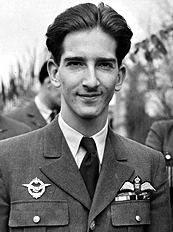Style His Majesty Last monarch Peter II Abolition 29 November 1945 | First monarch Peter I Formation 1 December 1918 Residence Royal Compound | |
 | ||
This is a List of heads of state of Yugoslavia from the creation of the Kingdom of Serbs, Croats and Slovenes in 1918 until the breakup of the Socialist Federal Republic of Yugoslavia in 1992.
Contents
The Kingdom of Yugoslavia was a monarchy ruled by the House of Karađorđević from 1918 up until World War II. The SFR Yugoslavia was headed first by Ivan Ribar, the President of the Presidency of the People's Assembly (president of the parliament), and then by President Josip Broz Tito until his death in 1980, when the a collective federal presidency rotated the presidency among the republic representatives. However, until 1990 the position of General Secretary of the League of Communists of Yugoslavia was usually the most powerful position (the position often coincided with the position of President). With the reforms in 1990, individual republics elected their own heads of state, but the country's head of state continued to rotate among appointed representatives of the republics until the country's dissolution.
Kingdom of Yugoslavia
The Kingdom of Serbs, Croats and Slovenes was created by the unification of the Kingdom of Serbia (the Kingdom of Montenegro had united with Serbia five days previously, while the regions of Kosovo, Vojvodina and Vardar Macedonia were parts of Serbia prior to the unification) and the provisional State of Slovenes, Croats and Serbs (itself formed from territories of the former Austro-Hungarian Empire) on 1 December 1918.
Until 6 January 1929, the Kingdom of Serbs, Croats and Slovenes was a parliamentary monarchy. On that day, King Alexander I abolished the Vidovdan Constitution (adopted in 1921), prorogued the National Assembly and introduced a personal dictatorship (so-called 6 January Dictatorship). He renamed the country Kingdom of Yugoslavia on 3 October 1929, and continued to rule as a de facto absolute monarch until his assassination on 9 October 1934, during a state visit to France. After his assassination, parliamentary monarchy was put back in place.
The Kingdom of Yugoslavia was defeated and occupied on 17 April 1941 after the German invasion. The monarchy was formally abolished on 29 November 1945.
All monarchs were members of the House of Karađorđević. Peter I, previously King of Serbia (since 1903), was proclaimed King by representatives of South Slav states. The royal family continued through his son (Alexander I) and his grandson (Peter II).
SFR Yugoslavia
After the German invasion and fragmentation of the Kingdom of Yugoslavia, partisans formed the Anti-Fascist Council for the National Liberation of Yugoslavia (AVNOJ) in 1942. On 29 November 1943 a AVNOJ conference proclaimed the Democratic Federal Yugoslavia, while negotiations with the royal government in exile continued. After the liberation of Belgrade on 20 October 1944, the Communist-led government on 29 November 1945 declared King Peter II deposed and proclaimed the Federal People's Republic of Yugoslavia.
From 1945 to 1953, the President of the Presidium of the National Assembly was the office of the Yugoslav head of state. The post was held by Ivan Ribar.
From 1953 to 1963, Josip Broz Tito simultaneously held the offices of the President of the Republic (head of state) and the President of the Federal Executive Council (head of government). In 1963, the new Constitution renamed the state as Socialist Federal Republic of Yugoslavia, and divided the office of the President of the Republic from the Presidency of the Federal Council, even if the President of the Republic retained the power to preside over the Government when it met, on the French model.
In 1974, the new Constitution provided for a collective federal presidency, consisting of representatives of the six republics, the two autonomous provinces within Serbia and (until 1988) the President of the League of Communists, with a Chairman in rotation. Notwithstanding, this constitutional provision was suspended because Tito was declared President for Life, thus chaired the collective presidency on a permanent basis. After his death in 1980, one member was annually elected President of the Presidency and acted as head of state.
League of Communists of Yugoslavia Socialist Party of Serbia Croatian Democratic Union Democratic Party of Socialists of Montenegro
